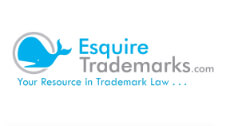Tips for Naming Your Business – An Overview
Naming a business is a complex and time-consuming process. So far, we have discussed Choosing a Company Name for Trademark Use, Legal Considerations When Naming Your Business, and The Stylistic Approach to Naming Your Business. Here is a summary of our most important tips for naming your business:

Tip #1 – Understand Your Company’s Core Message & Values
Understanding your company’s core message & values is a fundamental detail in choosing a unique name that will help customers identify your brand. You will build brand authenticity with a powerful name that reinforces your overall mission and values.
You want to choose words or phrases that align with the goods and services that your company offers. However, be aware that explicitly defining or describing your goods and services can result in weak trademark protection. For example, defining/generic terms such as BREW for beer or FOOTWEAR for sneakers, or descriptive terms such as LIGHT for low-calorie beverages or COTTON FEEL for clothing.
Considering both the core message and goods & services of your company will help you in the initial brainstorming phase of choosing a name.
Tip #2 – Do Your Research
Utilize resources such as the Thesaurus, online Business Name Generators, and Domain Name Registrars. Searching for synonyms with the Thesaurus will enhance creative thinking and provide more variety in your word choices. Business Name Generators will also provide thousands of company and domain name suggestions. GoDaddy is also a great domain name registrar for choosing a domain name that corresponds with your chosen business or brand name.
After you determine your company’s position in the market, you should search for similar trademarks in your field and avoid them. Understanding your competition will help you choose a name that is not confusingly similar with an already existing brand. Trademark infringement can stem from finding similarity in the sight, sound, or meaning in any element of a brand.
Search for your trademark in the USPTO database by visiting uspto.gov. Do a common law trademark search to explore databases, news, and public records to find out if someone is using a similar trademark.
You should also consider securing registrations in the countries that you sell or expect to sell in to avoid being blocked and help you stop knock-offs. Manufacturers and distributors refuse doing business unless a trademark registration is in place.
Tip #3 – Police & Enforce Your Trademark Rights
Use ™, SM, or ® where appropriate. The ™ designation informs others you are treating the name as a trademark. SM denotes “service mark”. The ® designation tells others that the name is a registered trademark. Publish a trademark use policy with your terms and conditions, and use trademark license provisions in your marketing and distribution agreements. Visit my article Trademark Symbol – ™ vs. ® for more on the proper use of each symbol.
Copyright your brand imagery and logo to protect your non-trademark intellectual property. The design of the product itself may be protected by a utility patent if the conditions of patentability are met. Similarly, the product itself or the design imprinted on a product may often be protected by copyright or design patent. See our article on how to Trademark and Copyright a Logo for more information.
Monitor the market for newcomers that may be using your intellectual property without authorization. Ensure your trademark remains in use with your goods & services or you may need to amend the registration or apply for a new one.
Tip #4 – Seek Professional Help
It is important to seek advice from an experienced attorney. Attorney Charles Riddle has 20 years experience practicing trademark, copyright, and intellectual property law. We appreciate new clients and will be happy to discuss your trademark strategy. Contact us & schedule a free phone consultation today!
